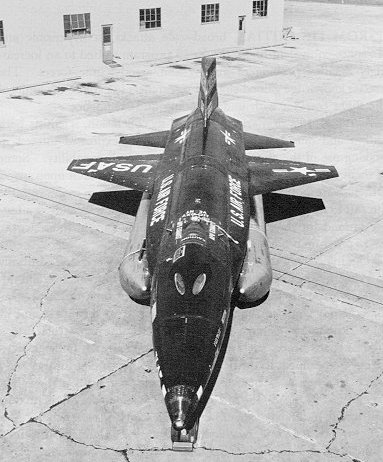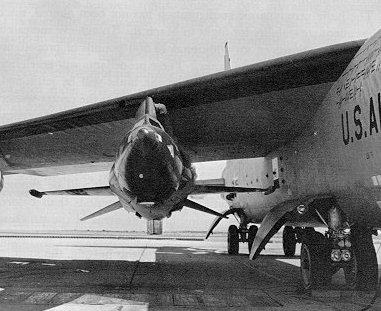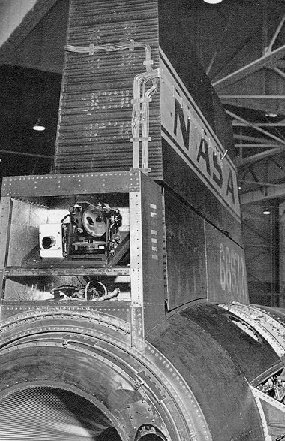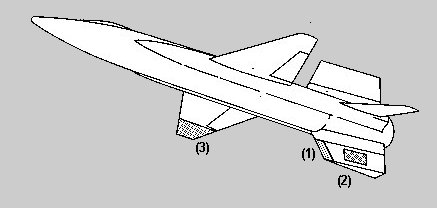
| Here's the X-15-2 (rebuilt following the McKay accident) with jettisonable fuel tanks attached to its side fairings. Those tanks carry an extra 13 500 lb. of propellants and will boost the plane's top speed to Mach 8 or provide longer flights. The plane's surface must be covered with an ablative coating to protect its structure from the 4000-deg. air temperatures of Mach 8 flight. |






